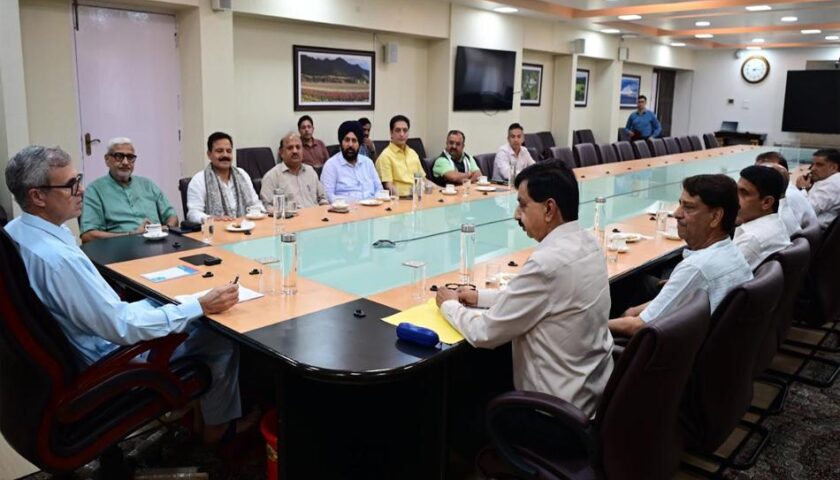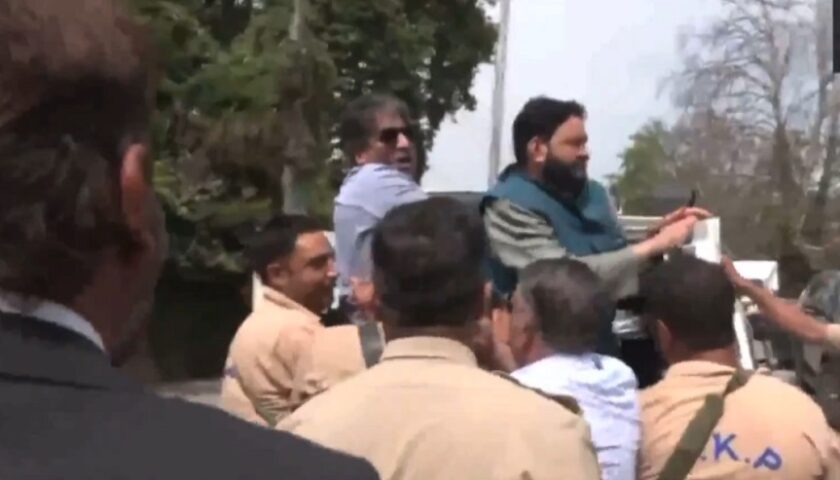 Rollie Mukherjee, a Baroda-based artist who has never visited Kashmir, is showcasing her artworks reflecting the pain and suffering of people in the Valley at a solo show titled “to stories rumoured in branches” presently on display at Conflictorium museum in Ahmedabad.
Rollie Mukherjee, a Baroda-based artist who has never visited Kashmir, is showcasing her artworks reflecting the pain and suffering of people in the Valley at a solo show titled “to stories rumoured in branches” presently on display at Conflictorium museum in Ahmedabad.
Conflictorium, a “Museum of Conflict” in Mirzapur in the older part of Ahmedabad city, was started three years ago in an old building and aims “to generate dialogue on peace and conflict to effect social transformation using the medium of art and culture”.
“The encouragement from the museum head Avni Sethi and her openness to discuss conflicts through art helped me freely exhibit my Kashmir art works without any inhibition,” said Rollie, whose 60 artworks on display in the museum, part of its third anniversary celebration, provide a visual insight into the conflict and impact of militarisation in Kashmir. She is hoping to visit Kashmir for the first time, also to display her artworks here for the people who inspire her.
“I’ve never visited Kashmir but I met a few Kashmiris in 90’s who used to frequently come to our house to sell warm dresses and carpets after walking miles in scorching heat,” she said. “They would share their painful stories of agony, suffering and crisis in Kashmir at that time which stayed with me.”
Her Kashmir artworks, which are drawing curious audience to the museum, deal with the abandoned architecture in Kashmir like schools, temples, mosques, shrines and guesthouses. “All these structures have lost their functional meaning over the years, having metamorphosed into bunkers, detention and torture centres in Kashmir,” she said. “I felt the peeled off, un-plastered walls of the old museum building with the images of Kashmiri people in pain would generate a haunting sense of absence and presence drawing people to know more about the issues and realities facing people in Kashmir.”
Rollie said she came to know about the toll of heavy militarization in Kashmir after reading about the situation in the Valley from Kashmiri writers, and also from social media. “Then I started questioning my privileges and decided to reflect the realities in Kashmir through my art works,” she said, adding that she also came to know about the “testimonies of common people which act as counter narratives to the narratives propagated by the state.”
Rollie said some people who came up to see her works in the museum told her that now ‘normalcy has returned’ to the valley. “I told them that in a heavily militarised place nothing can be normal and it is made to appear as normal,” she retorted politely. “Either Kashmir is shown as an exotic beautiful land or a place infested with militancy everywhere, thereby dehumanising the entire society,” she said.
She said she was puzzled when some people came up to her in the museum, asking her if she’d also depicted the pain of Kashmiri Pandits in her artworks. She showed them her work titled ‘testimonies’, a charcoal depiction of a man which has a backdrop of abandoned houses of Kashmiri Pandits.
“All people in Kashmir have suffered,” she said.
Baroda-based artist’s work depicts Kashmir’s pain






